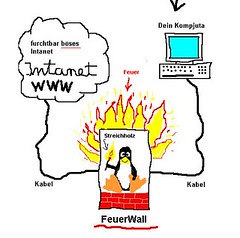What is Cloud Computing and does it provide more protection to your business?
Cloud Computing will bring many benefits to organisations, some of which include reducing operating costs, reducing power consumption and freeing you up to focus on your core business.
The concept of shifting computing to a shared service provider is not new. What may be new is that the cost of Cloud Computing is falling so dramatically that considering outsourcing to the Cloud is no longer rare, and it is now accessible enough that any individual or organisation can use it to their advantage.
Above the Clouds: Managing Risk in the World of Cloud Computing
For Cloud Computing to be a viable option, you need to be confident that your business information will be secure and that the service you offer to your customers will still be reliable. So if you want to adopt a Cloud Computing strategy, you need to make sure you carry out due diligence on the service provider before you entrust this firm with your vital data. However, the author challenges the assumption that Cloud Computing will offer less protection to your data than relying on an in-house server. Buy Now!>
Cloud Computing not only allows you to make economies of scale; it can also offer you the increased security that comes from sharing the resource. The author argues that moving over to Cloud Computing can actually help to defend your organisation from threats such as denial of service attacks, viruses and worms.
Cloud service providers will tell you that Cloud Computing is bound to be better, faster and cheaper. The reality is that before switching over to Cloud Computing, you need to think carefully about whether it will really work for your business. This book shows you what you need to do to ensure that with Cloud Computing you will continue to give the standard of service your customers require. It also offers you some valuable tips on how to choose your provider of Cloud services.
Published date: 9th February 2010.
Pre-order this book using Voucher Code: “cloud2010” to save 10%!
Related articles by Zemanta
- Is Your Head in the Cloud? (mikemoran.com)
- Migrating To The Cloud. Are You “All In” on The Wrong Hand? (thoughtpick.com)
- The Cloud Bubble: Is Computing Becoming a Utility? (java.sys-con.com)
- Musings on why Cloud Computing will prevail… (punetech.com)
- Why the cloud may be the final frontier for scammers (backupify.com)





![Reblog this post [with Zemanta]](https://img.zemanta.com/reblog_e.png?x-id=3a8e0883-feb2-4865-b29d-67dedeb875d5)
 Cloud computing is the future of the computing, which happens to provide common business applications online that run from web browser and is comprised of virtual servers located over the internet. Basic idea behind cloud computing is the accessibility of application and data from any location as long as you are connected to the internet. Cloud computing makes the
Cloud computing is the future of the computing, which happens to provide common business applications online that run from web browser and is comprised of virtual servers located over the internet. Basic idea behind cloud computing is the accessibility of application and data from any location as long as you are connected to the internet. Cloud computing makes the![Reblog this post [with Zemanta]](https://img.zemanta.com/reblog_e.png?x-id=e7f7ca92-d521-4be7-b5c4-dfc3282c607f)


